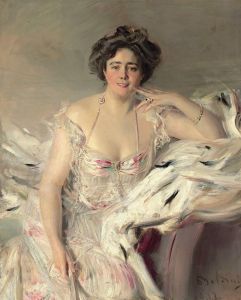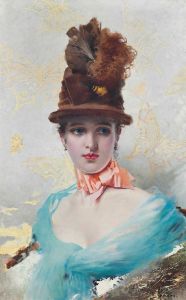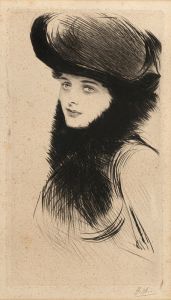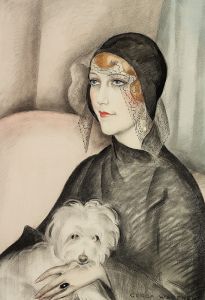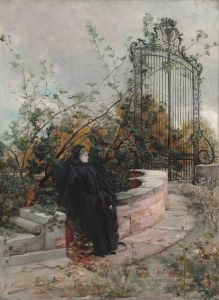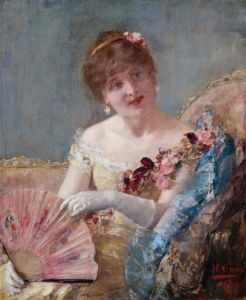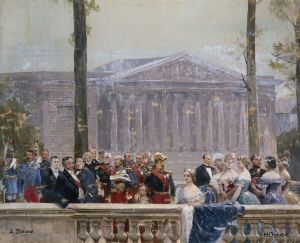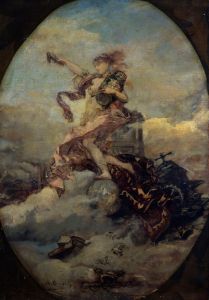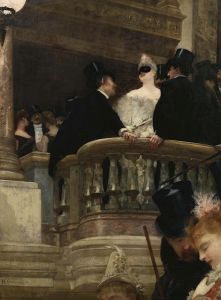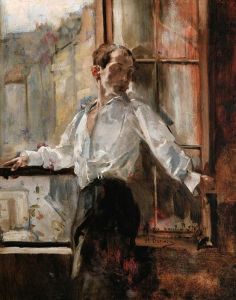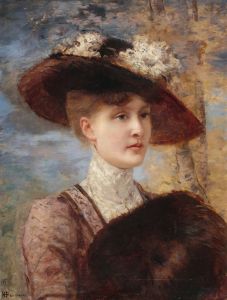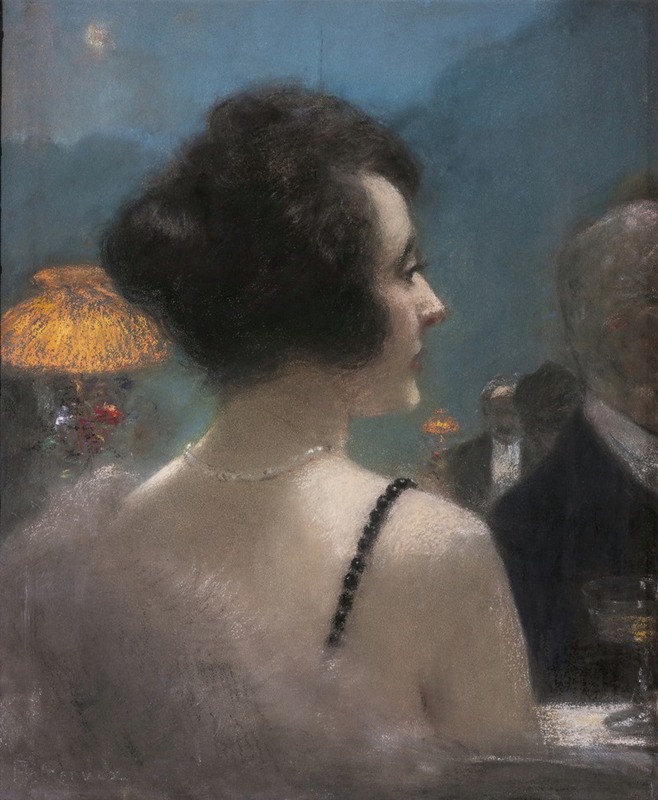
An Elegant Lady
A hand-painted replica of Henri Gervex’s masterpiece An Elegant Lady, meticulously crafted by professional artists to capture the true essence of the original. Each piece is created with museum-quality canvas and rare mineral pigments, carefully painted by experienced artists with delicate brushstrokes and rich, layered colors to perfectly recreate the texture of the original artwork. Unlike machine-printed reproductions, this hand-painted version brings the painting to life, infused with the artist’s emotions and skill in every stroke. Whether for personal collection or home decoration, it instantly elevates the artistic atmosphere of any space.
Henri Gervex was a notable French painter known for his contributions to the academic art scene in the late 19th and early 20th centuries. While Gervex is recognized for several of his works, including "Rolla" and "The Salon of the Rue des Moulins," there is limited information available specifically about a painting titled "An Elegant Lady" by Henri Gervex. It is possible that this title may refer to one of his many portraits or genre paintings that depict fashionable women, a common subject in his oeuvre.
Gervex was born on December 10, 1852, in Paris, France. He studied under Alexandre Cabanel, a prominent academic painter, at the École des Beaux-Arts in Paris. Gervex's early works were influenced by Cabanel's style, which was characterized by its polished technique and classical themes. However, Gervex soon began to develop his own style, incorporating elements of modern life and contemporary subjects.
Throughout his career, Gervex was known for his ability to capture the elegance and sophistication of Parisian society. His works often depicted scenes from modern life, including fashionable gatherings, social events, and intimate moments. Gervex's paintings were characterized by their attention to detail, vibrant colors, and dynamic compositions.
One of Gervex's most famous works, "Rolla," created in 1878, exemplifies his interest in contemporary themes and his skill in portraying the human figure. The painting was inspired by a poem by Alfred de Musset and depicts a scene of seduction and despair. "Rolla" was initially rejected by the Salon, the official art exhibition of the Académie des Beaux-Arts in Paris, due to its controversial subject matter. However, it was later exhibited at the Salon des Indépendants, where it received critical acclaim.
Gervex's success continued throughout his career, and he became a prominent figure in the Parisian art scene. He was a member of the Société des Artistes Français and received numerous accolades for his work, including the Legion of Honor in 1897. Gervex's paintings were exhibited widely in France and internationally, and he was commissioned to create works for public and private collections.
In addition to his paintings, Gervex was also involved in decorative arts and theater design. He collaborated with other artists and designers to create murals, stage sets, and other decorative works. His versatility and ability to adapt to different artistic mediums contributed to his reputation as a skilled and innovative artist.
Henri Gervex passed away on June 7, 1929, in Paris. His legacy as a painter is marked by his contributions to the depiction of modern life and his ability to capture the elegance and sophistication of his time. While specific information about "An Elegant Lady" by Henri Gervex is not readily available, it is likely that the painting, if it exists, reflects the artist's characteristic style and thematic interests.
For those interested in exploring Gervex's work further, it is recommended to examine his well-documented paintings and contributions to the art world during his lifetime. His works continue to be appreciated for their technical skill, vibrant portrayal of contemporary life, and insight into the cultural milieu of late 19th-century France.





